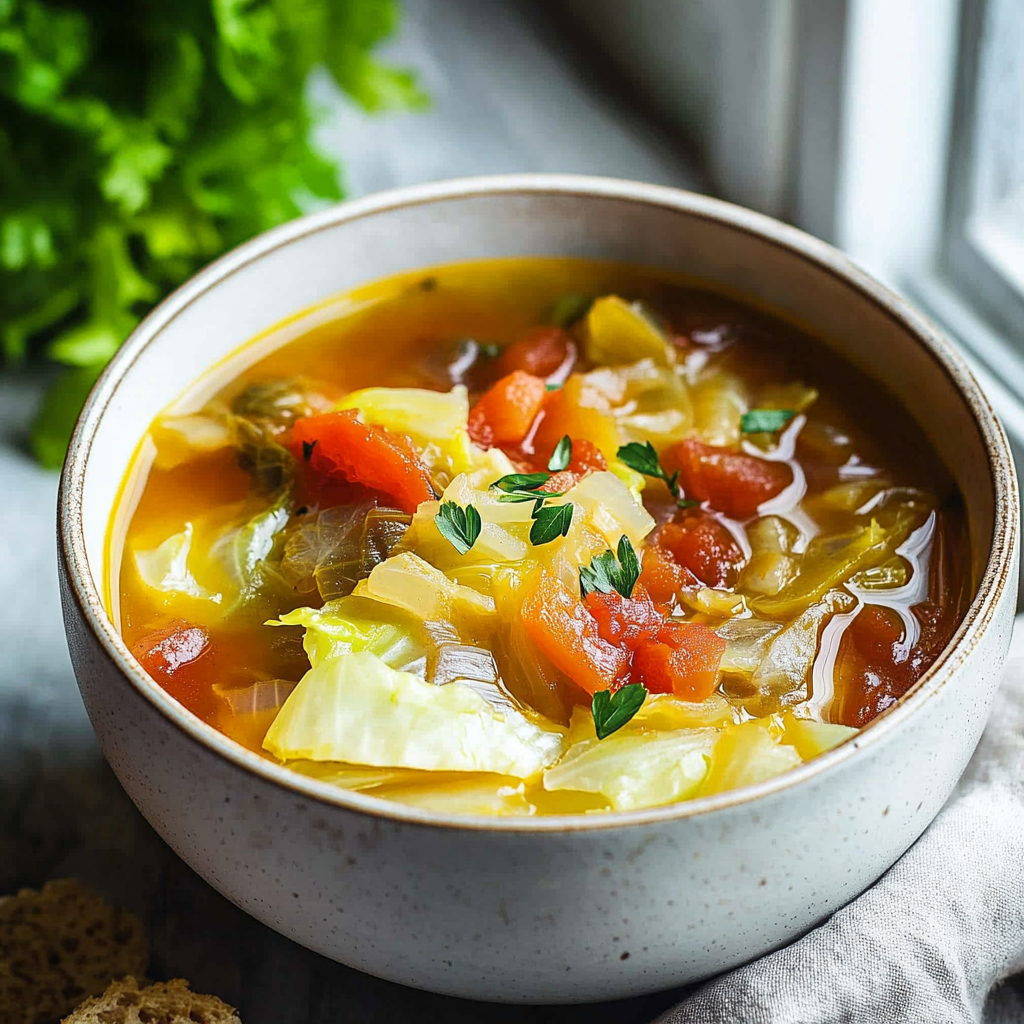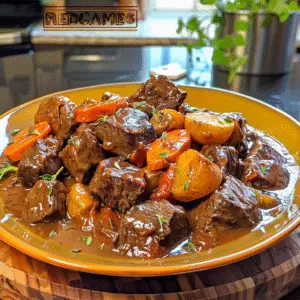Cabbage soup is not just a dish; it’s a comforting embrace on a chilly day. This simple yet nourishing recipe has been a staple in many households for generations.
The beauty of cabbage soup lies in its versatility and health benefits, making it an ideal choice for those looking to enjoy a hearty meal without compromising on nutrition. Packed with vitamins and minerals, this delightful soup is low in calories but high in flavor.
Ingredients
Cabbage
Cabbage is the star of this dish. A medium-sized head (about 2 pounds) is ideal for making a robust batch of soup. This cruciferous vegetable is not only low in calories but also packed with essential nutrients like vitamin K, vitamin C, and fiber.
Carrots
You will need approximately 2 large carrots for this recipe. Carrots add natural sweetness to the soup while providing beta-carotene and various antioxidants. Peel the carrots before slicing them thinly; this helps them cook evenly and blend well with the other ingredients.
Celery
Using 2 stalks of celery enhances the flavor profile of your cabbage soup significantly. Celery adds crunchiness and an aromatic quality that complements the other vegetables.
Onion
One medium onion is essential for adding depth to your cabbage soup’s flavor. Onions contain quercetin, which offers numerous health benefits, including anti-inflammatory properties.
Garlic
Three cloves of garlic will infuse your cabbage soup with delightful aroma and taste. Garlic is known for its immune-boosting properties and adds a lovely richness to dishes. Mince or chop the garlic finely to release its flavor fully during cooking.
Vegetable Broth
Four cups of vegetable broth form the base of our cabbage soup, providing moisture and richness without overpowering other flavors. You can use store-bought or homemade broth; both work well in this recipe.
Tomatoes
Two medium-sized tomatoes bring acidity and brightness to balance out the flavors in your soup. Chop them into small pieces before adding them to enhance their contribution to the overall taste.
Seasonings
Seasonings are crucial for elevating your dish’s taste profile! You’ll need salt, pepper, and optional herbs like bay leaves or thyme to complement your ingredients perfectly.
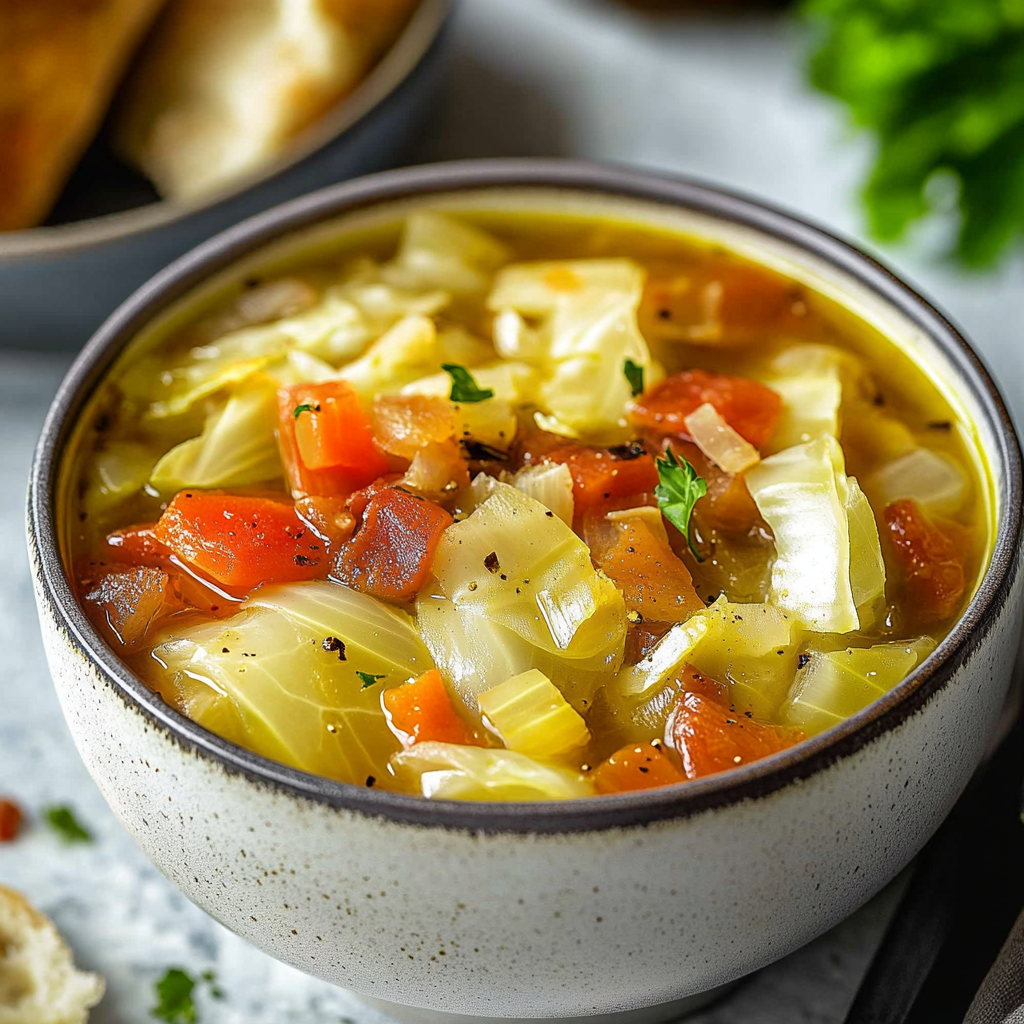
How to Prepare Cabbage Soup
Step One: Prepare Your Vegetables
Begin by washing all your vegetables thoroughly under running water to remove any dirt or residues. After cleaning them, chop them according to their type—slice the cabbage into thin strips, dice onions finely, slice carrots thinly, chop celery stalks into small pieces, and mince garlic cloves. If using tomatoes fresh from the garden or market, ensure they are ripe before chopping them into small cubes.
Once all vegetables are prepped and ready, set them aside in separate bowls; this will streamline your cooking process later on.
Step Two: Sauté Aromatics
In a large pot over medium heat, add about 2 tablespoons of olive oil or any cooking oil you prefer. Once heated, add diced onions first since they take longer to soften compared to other vegetables; sauté until translucent—about 3 minutes should do it! Next up are minced garlic cloves; stir continuously so they don’t burn while releasing their aromatic goodness; cook for an additional minute until fragrant.
Afterward toss in sliced carrots and chopped celery; continue stirring occasionally for about 5 minutes until they begin softening while combining nicely with each other’s flavors within that aromatic base you created earlier!
Step Three: Add Remaining Ingredients
Now it’s time to introduce our star ingredient—cabbage! Gently fold in sliced cabbage along with chopped tomatoes followed by pouring in four cups of vegetable broth prepared beforehand! Stir everything together until combined well—this ensures even cooking throughout!
Bring everything up to high heat until boiling occurs then reduce back down after reaching that point allowing us time together during simmering stage! Cover pot partially allowing steam escape while maintaining moisture levels inside while helping flavors meld beautifully together!
Step Four: Simmer Your Soup
Let your mixture simmer gently on medium-low heat anywhere between 30-45 minutes depending upon desired tenderness level achieved! The longer you let it cook; deeper flavors develop resulting in richer-tasting results! Stir occasionally ensuring nothing sticks onto bottom preventing burning issues occurring during process!
Check seasoning levels as well—taste test periodically adding salt/pepper accordingly based upon personal preference ensuring balanced profile achieved throughout dish itself!
Step Five: Final Touches
Once satisfied with tenderness/flavors developed within pot remove from heat allowing cool slightly prior serving up hot bowls filled generously satisfying every guest surrounding table tonight!
Consider garnishing individual servings with freshly chopped herbs such as parsley/dill if desired—it adds vibrant color contrast enhancing presentation pleasure visually enhancing overall enjoyment experience offered through each bite enjoyed thereafter!
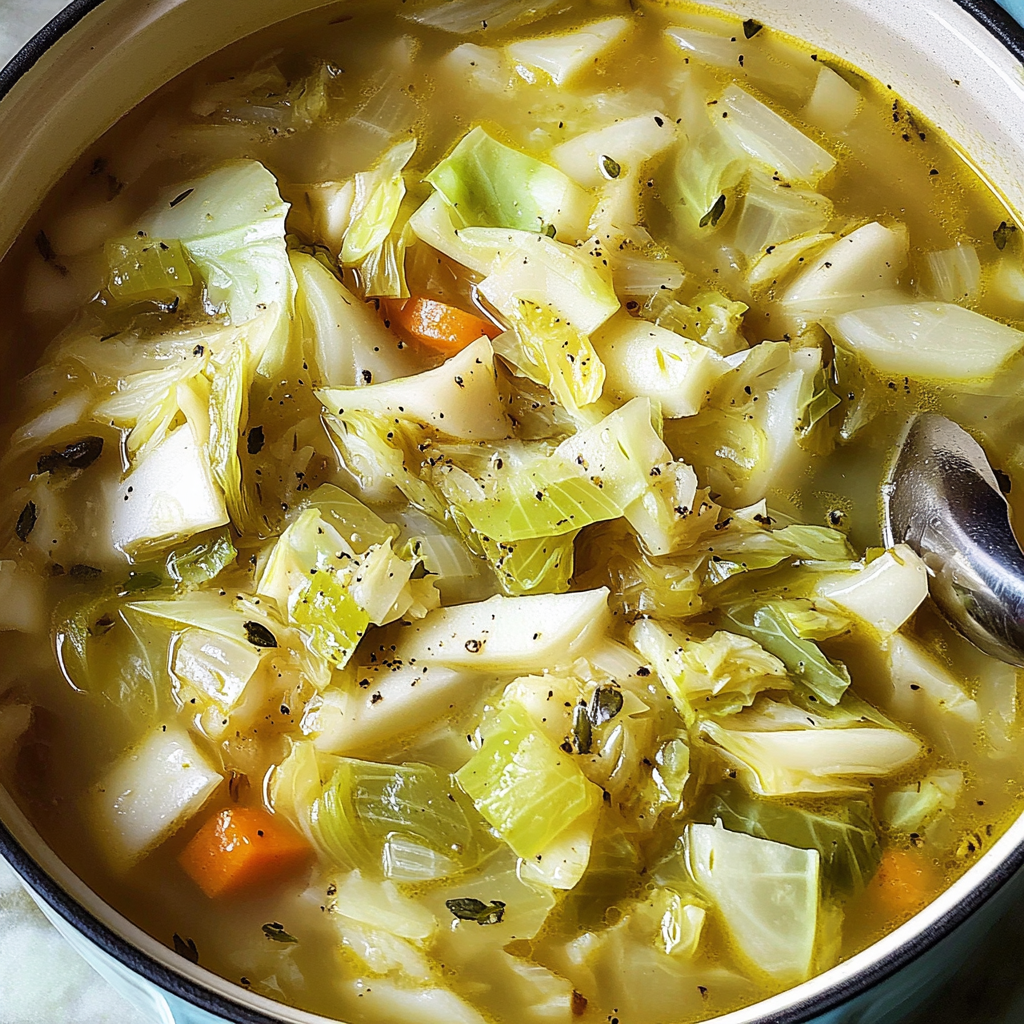
Serving and Storing Tips
Serving Suggestions
When serving your delightful cabbage soup hot from stovetop consider pairing alongside crusty bread slices or whole-grain rolls perfect for dipping! A sprinkle of grated Parmesan cheese could elevate taste further offering creamy richness complementing savory broth wonderfully—a true comfort food combo sure delight everyone gathered around kitchen table tonight!
Many people forget about garnishing their cabbage soup. A simple garnish such as fresh herbs or a dollop of sour cream can add a finishing touch that enhances both presentation and taste. Don’t overlook this final step; it can transform your dish from ordinary to extraordinary.
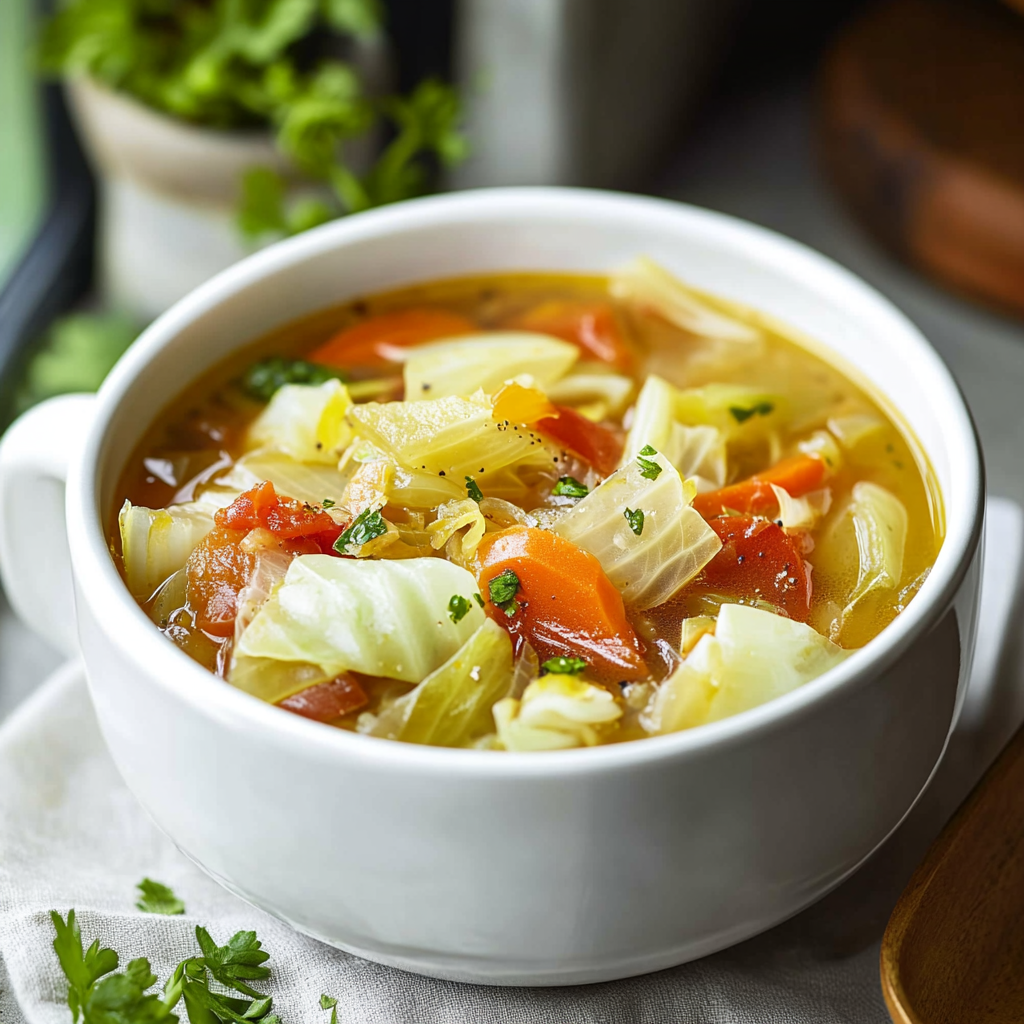
Tips and tricks
To make an exceptional cabbage soup, start by selecting high-quality ingredients. Fresh vegetables will not only enhance the taste but also contribute to better nutrition. Look for organic produce whenever possible; they tend to have more vibrant flavors and nutrients.
Incorporating protein into your cabbage soup is another effective tip. Adding beans, lentils, or even shredded chicken can make it more filling and nutritious. If you’re looking for vegetarian options, consider chickpeas or tofu for added texture and protein without meat.
Finally, consider adding acidity with ingredients like lemon juice or vinegar just before serving your cabbage soup. A splash of acid brightens flavors and balances out any heaviness in the soup base, leaving you with a refreshing bowl full of goodness.
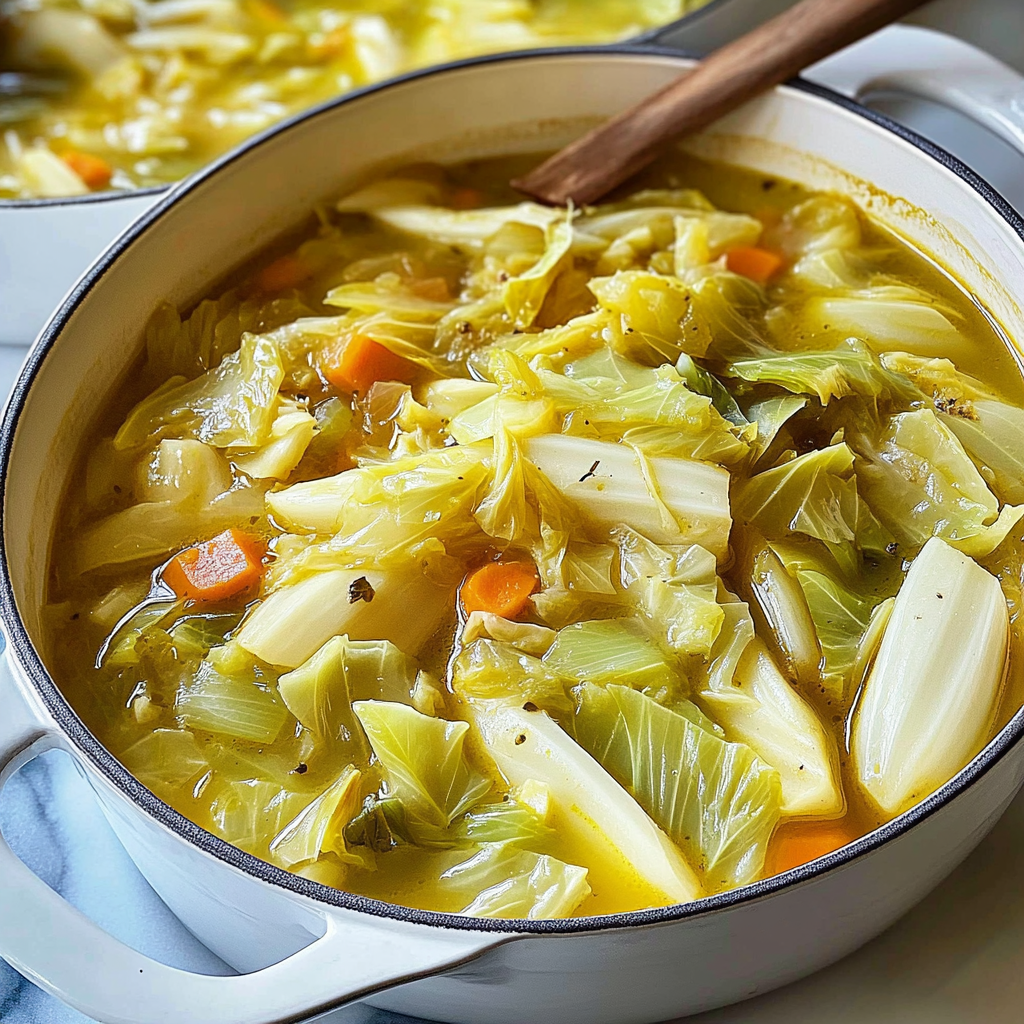
FAQs
What are the health benefits of Cabbage Soup?
Cabbage soup offers numerous health benefits due to its high nutrient density while being low in calories. Cabbage is rich in vitamins K and C as well as antioxidants that support overall health by reducing inflammation in the body.
Can I use frozen cabbage in my Cabbage Soup recipe?
Yes! Frozen cabbage works well when making soup because it retains much of its nutritional value after freezing and thawing processes.
How long does Cabbage Soup last in the fridge?
Cabbage soup typically lasts about 3-5 days when stored correctly in an airtight container within your refrigerator at temperatures below 40°F (4°C).
Can I make Cabbage Soup vegan-friendly?
Absolutely! A vegan version of cabbage soup can easily be made by selecting vegetable broth instead of chicken broth along with omitting any animal-derived ingredients like meat or dairy products found commonly within traditional recipes!
Is it possible to make Cabbage Soup spicy?
Of course! You can add spiciness by incorporating spices such as cayenne pepper or hot sauce into your recipe according to preference levels.
What else can I add to my Cabbage Soup?
You have plenty of options when it comes down what else goes into making delicious bowls filled with goodness! Protein sources like beans/lentils work wonders alongside grains like rice/quinoa & assorted veggies (carrots/celery).
